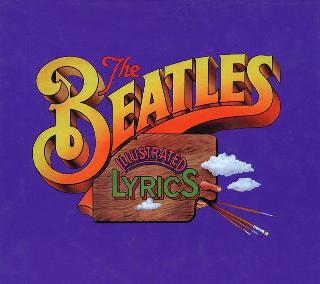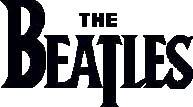Index
Home
Vorige
From Me to You
Composer(s) : Lennon and McCartney
Year : 1964
Chords/Tabs: From Me to You
Notes on "From Me To You" (FMTY)
Besides a catchy tune and deceptively complex arrangement, "From Me To You"
(FMTY) has a difficult-to-pigeon-hole musical style; after all, is it rock or
pop ? Blues or skiffle ?
Maybe it's just unmistakably Early Beatles, and with that, I'm only
being whimsical in part. FMTY was their third single, recorded during
the charmed period between the recording and the release of the "Please
Please Me" album. Those tight vocal harmonies with their flashes of
passionate falsetto, the drum fills, the harmonica hook phrase, the personal
pronouns, and so many other details were becoming both trend-setting and
a bit formulaic by that point, and who could really blame them, given the
roll they were so obviously on ?
We've already seen in our earlier studies of the likes of
"Love Me Do", "Thank You Girl",
"Please Please Me", and "I Saw
Her Standing There"
most, if not all, of the specific techniques that come into play in FMTY.
If unique coverage of such techniques per se were our main interest in this
series, we could just as well have skipped this one.
But, if anything, the fact that the songs in this first crop of their originals
are still so different from each other in mood and manner, in spite of the
relatively restricted compositional vocabulary with which they were written
makes them all the more extraordinary. The image comes to mind of
master chefs, capable of producing an astonishing variety of dishes from a
small, fixed list of ingredients.
So come 'head; this one's "got (almost) everything that you want"!
Form
The short eight-measure verse creates an overall time scale of modest
proportions even though the form is paradoxically quite sprawling, with two
bridges, a double verse in the middle, and both intro and outro:
Intro -> Verse -> Verse -> Bridge -> Verse -> Verse (solo) ->
Bridge -> Verse -> Outro (w/complete ending)
The irony of the short length versus long form will seem sharper if you recall
that in form, FMTY is identical to ISHST.
Harmony
The prominence given to the I-vi chord progression in FMTY is something fairly
widespread among the early L&M originals. Similarly, the gratuitous dominant
seventh on F in measure 5 of the verse ("gratuitous" to the extent that it
doesn't actually function as a dominant seventh but merely comes along for
the spice it adds), and the augmented triad in the bridge are also fairly
typical L&M chord tricks. There are, however, a few more novel details
elsewhere in the harmony.
The song is among the very first of their officially released originals
to feature a modulation to an alternate key during the bridge section.
In spite of its brevity, the excursis to F Major we'll see below creates an
expansive sense of harmonic space which belies the compressed time scale
of the song.
Also unique is the clever surprise ending on the vi chord.
Arrangement
There are several characteristic ingredients in the arrangement, some of
which would eventually become almost cliche trademarks.
- The vocal part features a duet virtually throughout. Granted, the many
flashes of 2-part harmony are separated by long stretches of the same line
sung in unison by Paul and John, but there is no vocal *solo* part here.
- Those flashes of vocal harmony, make frequent use of open fifths and falsetto
singing.
- Drum fills are carefully deployed at special, structural or dramatic
points in the song, not at liberty.
- An overdubbed harmonica is used to introduce the hook phrase.
- And what sounds like it might be a simple oom-pah bass part actually
features a snapped rhythm of dotted quarters and eighth notes in alternation.
Intro
The short, four-measure intro presents, right at the outset, two repetitions
of the hook phrase of this song. Just as we saw in
"Please Please Me", the
instrumental version of this hook turns out to be subtly different in rhythmic
pattern from the one used in the verses even though the pitch content of both
versions is identical.
Note the complete reliance in this intro on just the I and vi chords. Also
note the scoring for harmonica and scat-singing voices, and the way the drum
fill seems to both articulate the border between the intro and following
verse section, as well as effecting a neat transition between the two.
Verse - "Is there anything that you want ?"
As already mentioned, the verse is only eight measures long and its
harmonic shape is closed off by virtue of remaining closely within the
home key and ending more or less on the I chord. Although the melody
itself is not particularly arch-like in outline, the harmony in this
instance lends some dramatic arch shape to the verse. Use of that F7, with
its E flats that are foreign to the key, helps add an effective bit
of tension right at the mid-point, while the slight increase in the
harmonic rhythm toward the end of the phrase helps wind it down again.
|C |a |C |G ||F7 |a |C G |C a|
C: I vi I G IV vi I G I vi
The diagram above is of the first verse. Note how the use of the vi chord
in the second half of the last measure keeps the harmony open just enough
to allow the music to continue at this point with verse #2. See for yourself
just how lame that transition would sound if you eliminate the vi chord.
The fact that this detail is missing in "take 2" of the song (there, they stay
with the C chord for the entire measure) indicates clearly just how careful
they were in the studio to revise at the last minute even relatively
small details for the better.
At the end of the second verse the change to the 'a' minor chord in
measure 8 is eliminated and in its place, the C chord has a dominant 7th
added to it in the second half of the measure. This sustaining of the C root
provides an added sense of closure at that point and the addition of the 7th
to it more effectively sets up the coming bridge.
The hook phrase as it appears in the first part of this verse is
presented with quite a bit more bouncy syncopation in comparison to its
rather more four-square appearance in the intro. The melody of the
song in general, is shot through with gentle syncopations which
play off effectively against the even, skiffle-like shuffle of the
instrumental accompaniment.
The little snippets of vocal harmony include an open fifth in the first
case ("... that you want") and a surprising and suddenly passionate burst
of falsetto from John in the second ("... I can do"). I believe it is
John who sings the lead part here with Paul singing harmony. This
results in Paul singing above John in the first phrase and then
crossing over him to sing below in the second phrase; a variation
on a similar trick seen earlier in both "Love Me Do"
and ISHST.
While we're on the topic of vocal parts, chalk up in verse 2 yet another
of those infamous word collisions between John and Paul on the phrase
"Just/so call on me ...". It only goes to show that nobody who was
there at the time was thinking in terms of people going over this
stuff as carefully as some now do, so many years after the fact. Either
that, or perhaps this "mistake" was on purpose; i.e., a *very* early clue :-).
Bridge - "I've got arms that long to hold you ..."
The bridge is also eight measures long but it harmonically branches out
nicely in contrast to the verse:
|g |C7 |F |- ||D7 |- |G |#5(aug) |
F: ii V I
C: IV V-of-V V
We have what is called a pivot modulation to the key of F. The common chord
between the home key of C and this new key is the C Major chord at the end of
the previous verse. One hears that chord at the time it's first played as
the I of the home key. But once the bridge begins, the ear retrospectively
reinterprets it as though it were the V of the key of F. Such common chords
are not strictly required in order to effect a change of key, but their
utilization makes such shifts smoother, and less abrupt. It's somehow
analogous to the variety of means by which you might change the topic of
conversation.
This bridge provides quite a bit of contrast to the verse sections. Right
off the bat the melody suddenly becomes much less syncopated. And
in live versions, the drumming, especially the cymbal bashing, may
be noted to suddenly become quite muted at this point.
But the greater source of contrast is the way this section builds toward
an ultimate climax as opposed to the arch-like, closed shape of the verse.
Particularly in the last two measures we have a pile-up of intensification
based on several musical factors -- the augmented inflection of the V chord
by literally stretching the D in the melody to a D#, the cross rhythm of
slow triplets in the rhythm guitar (must be John, right ?), the patented
Ringo drum frills, and of course, that crowd pleasing falsetto moan for
two-part hamony on the word (ahem) "whooo".
For the sake of variation (and avoidance of foolish consistency), they
add in the second bridge a novel touch of two-part harmony at the very
beginning of the section. Note how, true to form, Paul's backing
part yet again starts off beneath John's lead, only to jump over it
a few notes into the phrase.
Instrumental Solo Verse
You might call this section a "semi-solo", and it's a simple, standard trick
of the trade; the Boys themselves would re-use this gambit well into their
Middle Period.
The musical framework is identical to all the other verses, yet what starts
out as an instrumental solo merely "based on" the same old chord progression,
degenerates in the second half, to a refrain-like *verbatim repeat* of that
part of the verse.
There are two other cute little twists in the front half. First is the
way that the instrumental first half of the section presents the hook
figure in its alternate incarnation from the intro. This momentary retreat
into the realm of the more-square makes the syncopated second half of the
section sound all the more bouncy when it returns. Second, is the responsive,
mockingbird-like interjection of the singers here which almost subliminally
broadcasts the title of the song at you.
This section did not yet exist as of that early "take 2" mentioned above,
and based on the impression made by that otherwise pleasing performance,
I assume that they belatedly added this because the song felt a tad too
short.
Outro
This outro section is developed as a springboard-like outgrowth of the
end of the final verse. The last two words of that verse are repeated
the canonical three times, making for a creative variation on the more
routine procedure where the entire last line gets reiterated; as in, for
example,
ISHST. Far from being an arbitrary change,
the repetition here of only "to *you*" bears effective emphasis.
The rhetoric of the lyrics is ably abetted by the antiphonal accompaniment,
which includes a descending bassline which in turn, is nicely reinforced by
heavy syncopation and vigorous drum fills. As that bassline moves from C ->
A -> A-flat, it incidentally creates yet another **augmented chord, one
that is more suspenseful and harmonically ambiguous than the one seen earlier
in the bridge.
[** I'll acknowledge that after many listenings, I still have
a sufficient shadow of a doubt that this chord may be A flat
Major instead of an augmented triad. It sounds to me that the
rhythm guitar, otherwise quite a visible presence in the rest
of the song, suddenly sits out this crucial measure. In any event,
the mechanics described in the following paragraph roughly work the
same in either case.]
This second augmented chord, spelled from bottom up, A-flat/C/E, could
move in one of two directions. Either the A-flat can resolve downward,
making for a move to C Major, or else, the A-flat can behave as though
it were a G#, resolving upward, making for a move to 'a' minor.
What we get is quite enigmatically ingenious: the very next chord
following the augmented one turns out, indeed, to be C Major, the I
chord of our home key, yet the music immediately procedes with one final
statement of the hook phrase before terminating abruptly on the 'a' minor
chord. The musical logic of bringing down the curtain on the hook phrase
is so subtly persuasive, that you barely note the ironic fact that the
song has ended off-center from the home key; actually on the chord of
the home key's relative minor.
Note by the way how, for virtually for the only time in the song, the voices
are silent in this little coda; in contrast, even the intro at least included
scat singing as part of the instrumental texture.
Personal Pronouns
Nowhere is the uniquness of this song in spite of its recycled ingredients
more evident than in the meaning of its lyrics.
Paul with rather unwonted candor, in the interview which appears as a preface
to Lewisohn's "Recording Sessions", allows that they had gotten themselves
into a bit of a rut in the early songs with their repeated wordplay on
personal pronouns, but he adds that this started out being motivated by
a desire to "play to the market." He mentions our song by name in this
context, but even so, I think it would be unfair to under-rate it as a mere
exploitational pandering to what Brian Matthews on BBC radio might call
"the little darlin's."
In FMTY, a particular immediacy is achieved by the use of direct address.
How else could this group of four fabulous gentlemen manage, in the midst of
a crowded concert hall or across the incorporeal airwaves, to establish such a
direct connection to their audience ? If you think not, try for comparison
the very different feel that this song takes on when the lyrics are just
slightly changed as they were in order to use it as the title jingle for
their series of BBC radio holiday specials. "From *Us* To You", for my money,
is much more impersonal because the change of 'me' to the plural "us"
subconsciously leads one to hear the 'you' which follows in the plural
as well.
I bring this whole thing up because in the context of a plethora of
songs about you&I, this one is still rare, if not entirely unique in the
way that its message so simply and starkly describes what the lover longs
to give to the beloved without condition or expectation of anything in
return.
The other pronoun-bound songs which come to mind are otherwise embroidered
with details which, though they add context and color, also skew the
focus and complicate the message. We find such things as the drama of
pursuit ("Please Please Me") or blind faith in its
successful outcome ("I'll Get You"); a polite request
("I Want to Hold Your Hand") or a raw pleading
("Love Me Do") that love be requited; an expression
of gratitude for love
received ("Thank You Girl") or a prayer that it be
not harmed by absence or separation ("P.S. I Love
You", "All My Loving", et al.) The list goes on.
As usual, I haven't done my homework as exhaustively as I should, but I
hope the point is made.
"From Me To You" is all the more potent because its expression of love that
is ready and willing to be given is so completely unencumbered and unobscured.
We're not even told in this instance what it is within or about the other
person that motivates such love, but the combination of words and music
leaves no room for doubt that it most certainly must exist.
Regards,
Alan (awp@bitstream.com *OR* uunet!huxley!awp)
---
"When was the last time you gave a girl a pink-edged daisy ? When did you
last embarass a sheila wid your cool appraising stare ?" 072291#28
---
Copyright (c) 1991 by Alan W. Pollack
All Rights Reserved
This article may be reproduced, retransmitted, redistributed and
otherwise propagated at will, provided that this notice remains
intact and in place.
Ook op Past Masters, Vols. 1:
Ook op 1962-1966:
Ook op On Air - Live At The BBC Vol 2:
Ook op 1:
(c) 2024 Serge Girard


 (c) Alan Aldrigde, The Beatles Illustrated Lyrics
(c) Alan Aldrigde, The Beatles Illustrated Lyrics